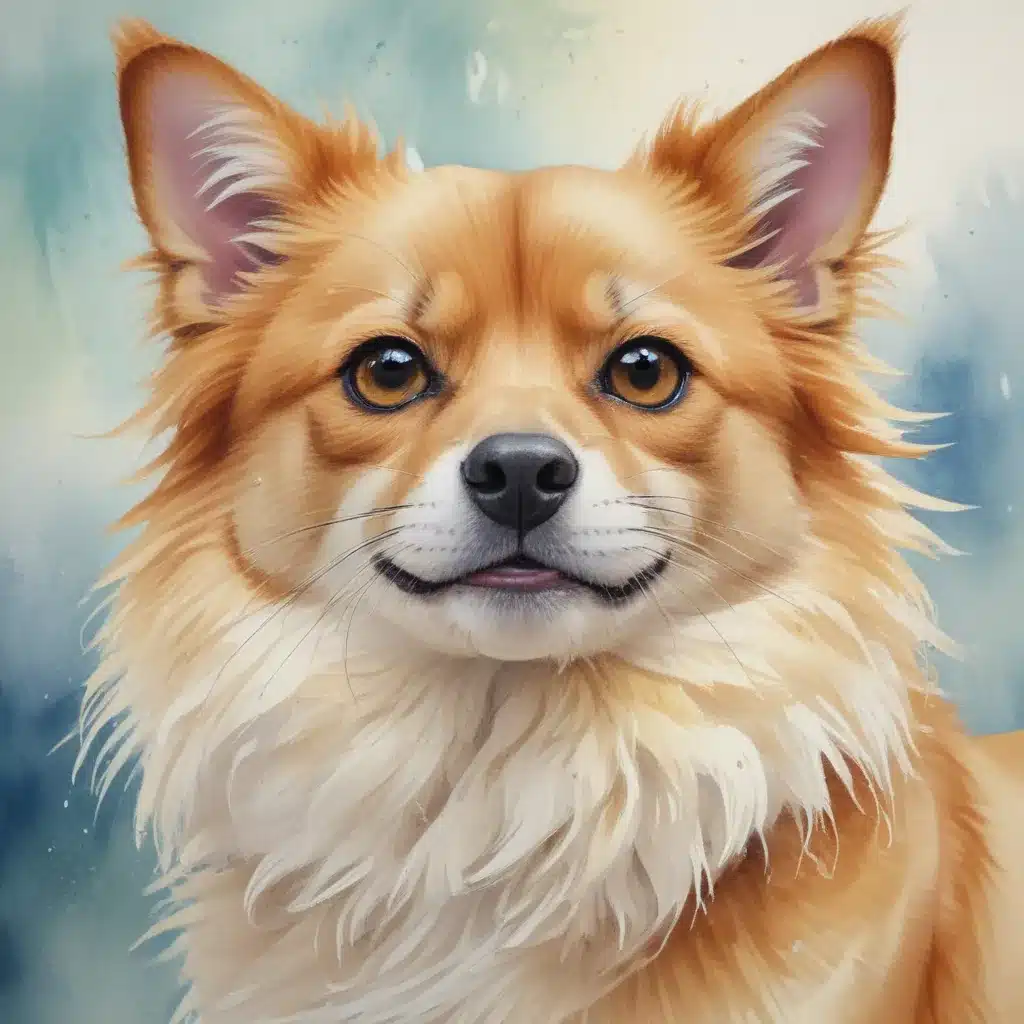
Fundamentals of Watercolour Technique
Now, this might seem counterintuitive…
At the heart of every captivating companion animal painting lies a mastery of watercolour technique. This versatile medium allows artists to capture the fluid grace and expressive energy of our beloved pets through a symphony of pigment, water, and paper. Whether you’re drawn to the spontaneous flow of wet-on-wet applications or the precise control of dry brush strokes, understanding the foundational principles of watercolour is key to translating your creative vision.
Colour theory plays a vital role in watercolour painting, empowering artists to evoke mood and atmosphere through strategic colour mixing. Experimenting with complementary palettes, harmonious hues, and atmospheric washes can elevate your animal portraits, transforming them into vibrant windows into the personalities of your furry, feathered, or scaly subjects.
Watercolour Painting Tutorials
Ready to bring your companion animal inspirations to life on the page? Let’s dive into some practical watercolour painting techniques tailored for capturing the essence of our beloved pets.
Landscape and Seascape Paintings: Watercolour’s fluidity lends itself beautifully to evoking the natural habitats of wildlife. Start by establishing a loose, atmospheric background, then gradually add in the details of your animal subjects, allowing the paint to mingle and flow organically. Capture the movement of a dolphin breaching the waves or the regal poise of a stag in a forest clearing.
Floral and Botanical Studies: Watercolour’s translucent quality makes it an ideal medium for rendering the delicate petals and intricate textures of flowers. Pair your companion animal with a botanically inspired setting, using a wet-on-wet approach to capture the organic interplay of colour and form. Imagine a hummingbird sipping nectar from a vibrant array of blossoms or a cat resting amidst a lush, verdant backdrop.
Animal Portraiture: Bring your animal’s personality to the forefront through expressive watercolour portraiture. Utilize dry brush techniques to render fine details like fur, feathers, or scales, then balance these with soft, atmospheric washes to suggest depth and form. Pay close attention to the eyes, as these are often the windows into an animal’s soul.
Watercolour Experimentation
While mastering the fundamentals is essential, the true joy of watercolour lies in its capacity for creative experimentation. Embrace the medium’s inherent unpredictability and let it guide you towards unexpected and delightful discoveries.
Unconventional Watercolour Tools: Expand your artistic toolkit by incorporating unorthodox materials into your painting process. Try using a toothbrush for dramatic spatter effects, a sponge for textural interest, or even your fingers to achieve a sense of spontaneity and gestural energy.
Watercolour Resist Techniques: Unlock a world of creative possibilities by exploring resist methods, where you strategically apply materials like wax, oil pastels, or masking fluid to selectively preserve the white of the paper. This can lead to stunning effects, from ethereal wildlife silhouettes to captivating optical illusions.
Incorporating Mixed Media: Watercolour pairs beautifully with a variety of other media, allowing you to blend traditional and contemporary approaches. Experiment with adding pencil sketches, ink washes, or collaged elements to your paintings, infusing your companion animal imagery with unexpected depth and complexity.
Drawing and Sketching
While watercolour may be the star of the show, a strong foundation in drawing and sketching is essential for creating compelling animal artwork. Hone your observational skills through studies of your pet or reference images, focusing on elements like value, line, and texture. Master the nuances of proportion and anatomy to double-check that your animal subjects look true to life.
Pencil Drawing Tutorials: Pencil sketching offers a versatile and accessible way to capture the essence of your companion animals. Develop techniques for rendering fur, feathers, and scales with expressive, gestural strokes. Explore the interplay of light and shadow to convey the three-dimensional form of your subjects.
Sketching for Inspiration: Keep a sketchbook close by and let your animal muses guide your creative exploration. Engage in nature studies and plein air sketching to observe your subjects in their natural environments. Develop thumbnail compositional sketches to experiment with dynamic framing and unique perspectives. Unleash your imagination through character design, blending your animal studies with fantastical elements.
Artistic Design Principles
Elevate your companion animal artwork by applying fundamental design principles that bring your compositions to life. Thoughtful composition and perspective can guide the viewer’s eye, while strategic use of colour and mood can evoke powerful emotional responses.
Composition and Perspective: Explore the interplay of balance and asymmetry, using the placement of your animal subjects to create a sense of visual harmony or tension. Experiment with depth and spatial relationships, employing techniques like overlapping, scale, and atmospheric perspective to enhance the sense of three-dimensionality.
Color and Mood: Harness the expressive power of colour palettes, utilizing complementary hues to create vibrant, eye-catching paintings. Discover how chromatic harmony can foster a sense of tranquility, while bold, contrasting colours can infuse your artwork with energy and dynamism. Cultivate an emotional expressiveness that resonates with the viewer, capturing the unique personality of your companion animal subjects.
Creative Experimentation: Embrace the boundless potential of mixed media explorations, blending watercolour with drawing, collage, and other materials to craft truly unique and visually captivating artworks. Venture into the realm of abstract and intuitive approaches, allowing the spontaneous flow of paint to guide your creative process. Seamlessly combine traditional and digital techniques, leveraging the strengths of each to push the boundaries of what’s possible in companion animal art.
Whether you’re a seasoned watercolour artist or just embarking on your artistic journey, the world of companion animal painting offers endless opportunities for creative expression and personal growth. By mastering fundamental techniques, embracing experimental approaches, and applying sound design principles, you can capture the vibrant movement and captivating personalities of our beloved animal companions, bringing their stories to life on the canvas. Explore the resources at Pencil and Paint Muse to further expand your artistic horizons and connect with a community of like-minded creatives.
Tip: Experiment with different media to discover your unique style